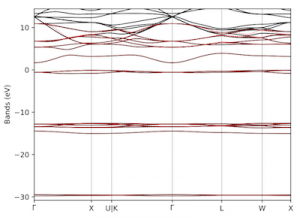V. Vitale, G. Pizzi, A. Marrazzo, J. R. Yates, N. Marzari and A. A. Mostofi, Automated high-throughput wannierisation, npj Computational Materials 6, 66 (2020).
Maximally-localised Wannier functions (MLWFs) are routinely used to compute a wide range of advanced materials properties, including highly accurate band structures, gyrotropic effects, spin Hall effects, thermoelectric properties and electron-phonon interactions. They are also an important scale-bridging tool for transferring the accuracy and transferability of first-principles methods at atomic scales to tight-binding models that can be used for mesoscale simulations (read our review article in Reviews of Modern Physics for more details).
The impact of MLWFs on electronic structure research is exemplified by the widespread usage of the Wannier90 code for generating and using MLWFs, which is interfaced to almost every major electronic structure code and is used by thousands of researchers worldwide.
In a paper appearing in npj Computational Materials, we present a general automated high-throughput framework for computing MLWFs and using them to compute material properties. Our approach is based on the recently proposed selected columns of the density matrix algorithm. The process does not require any a priori chemical intuition about the system being studied, and is therefore ideally suited to high-throughput calculations. Our workflows have been implemented within the AiiDA framework, and the full dataset of ~200 materials as well as the full provenance of how to generate the data shown in this work are provided via a publicly available Virtual Machine that can be downloaded from the Materials Cloud. To the best of our knowledge, this is the first time that such a level of reproducibility has been made available in the field of first-principles electronic structure simulations.
This work was part of Dr Valerio Vitale’s postdoctoral work as part of the European Union’s Centre of Excellence E-CAM, supervised by Jonathan Yates and Arash Mostofi.
